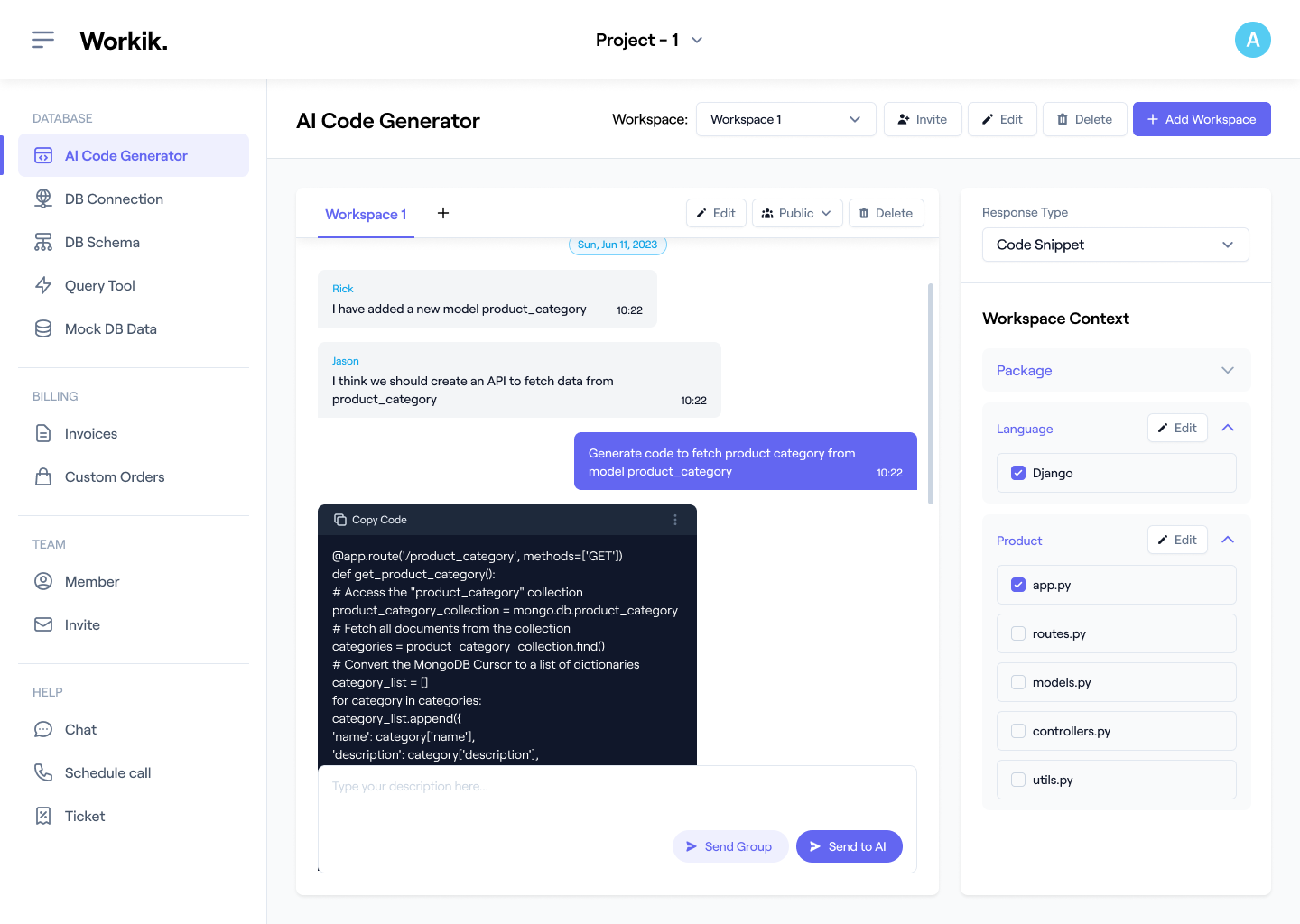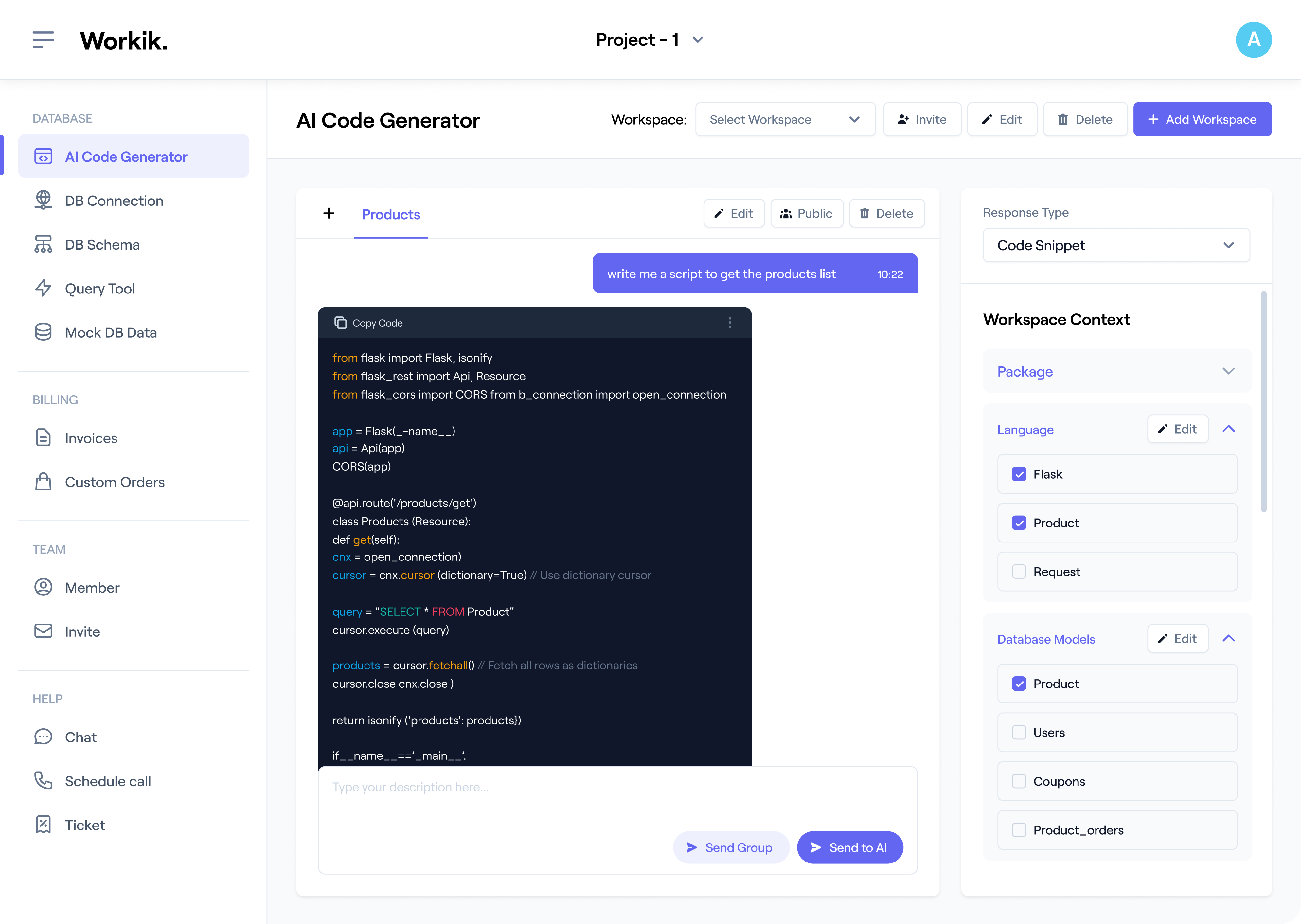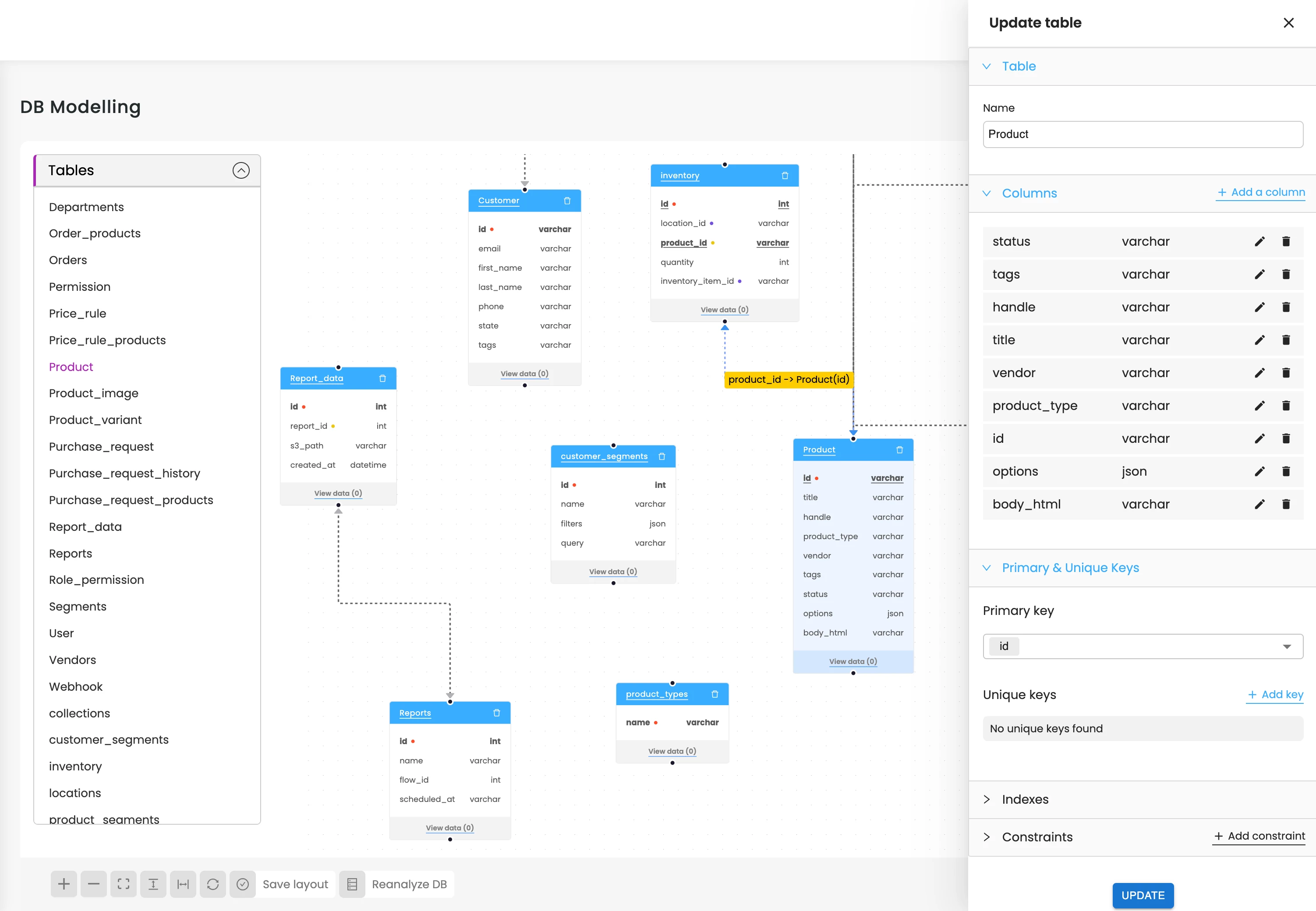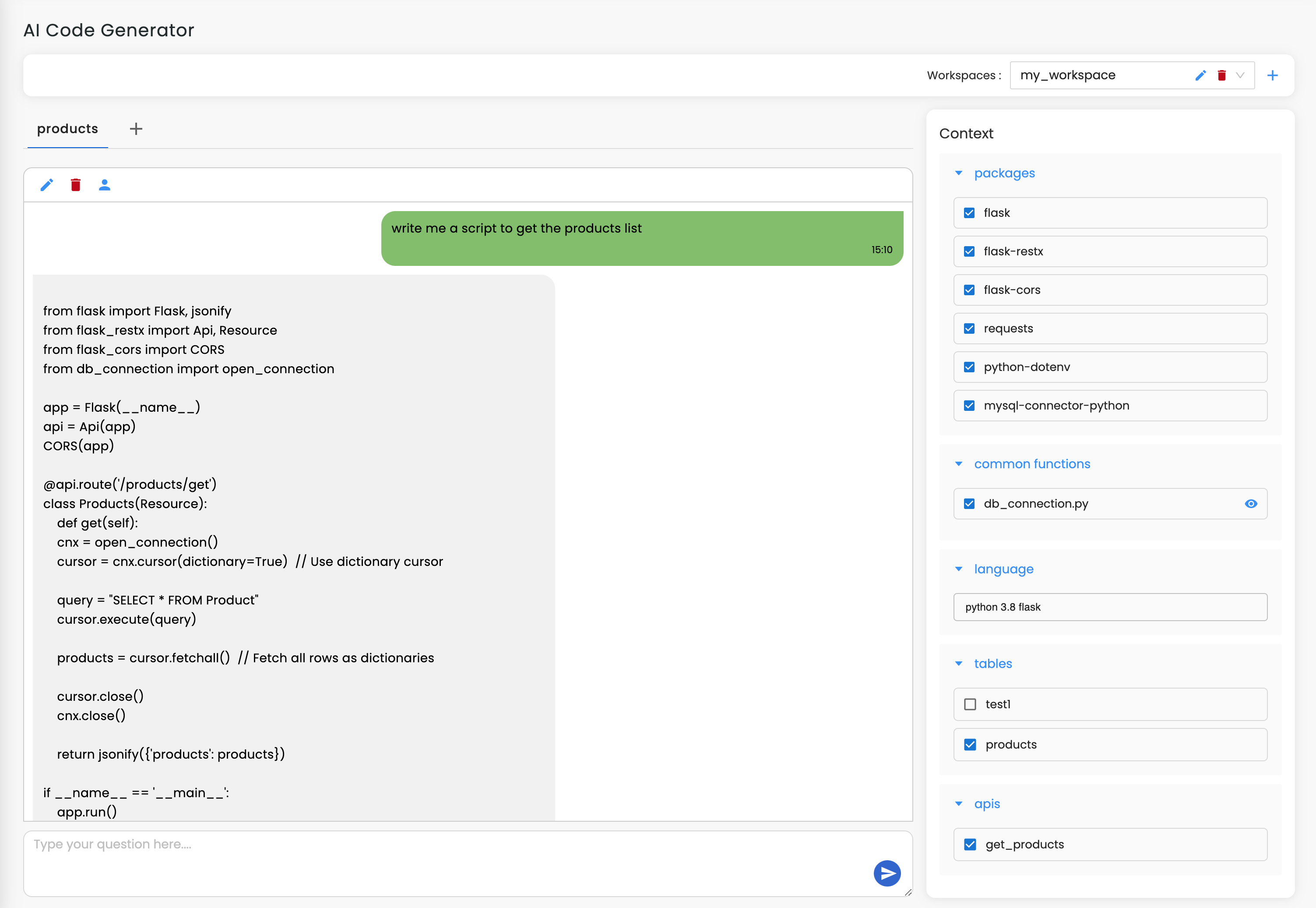Join our community to see how developers are using Workik AI everyday.
Supported AI models on Workik
GPT 5.2, GPT 5.1 Codex, GPT 5.1, GPT 5 Mini, GPT 5, GPT 4.1 Mini
Gemini 3 Flash, Gemini 3 Pro, Gemini 2.5 Pro, Gemini 2.5 Flash
Claude 4.5 Sonnet, Claude 4.5 Haiku, Claude 4 Sonnet, Claude 3.5 Haiku
Deepseek Reasoner, Deepseek Chat, Deepseek R1(High)
Grok 4.1 Fast, Grok 4, Grok Code Fast 1
Models availability might vary based on your plan on Workik
Features

Generate Test Cases
AI reads your Go functions and generates accurate test functions by understanding their logic and behavior.

Debug Failures with AI
Quickly identify causes of test failures, panics, or missed coverage paths with AI-powered insights.

Auto-Mock Interfaces
Workik AI detects interfaces like UserService or DBClient and creates ready-to-use mocks using GoMock or Testify.

Generate Tests in Bulk
Workik AI scans your Go files or packages and generates comprehensive _test.go files across the codebase.
How it works
Get started instantly with a free Workik account — no setup required.
Link your Golang codebase from GitHub, GitLab, or Bitbucket. You can upload .go files, specify Go modules, and define testing frameworks like Testify or GoMock for accurate test generation.
Create precise Go test cases using Workik AI. Handle interfaces, nested structs, and error scenarios with autogenerated tests that ensure thorough coverage and accuracy.
Review output, tweak logic, and invite team members to collaborate on golang test generation.


Expand
.png)
.png)
Expand


Expand


Expand


Expand


Expand


Expand


TESTIMONIALS
Real Stories, Real Results with Workik
I uploaded a CLI utility and Workik nailed coverage for edge cases I hadn’t even considered.

Tommy Chen
Open Source Contributor
Workik AI automatically generated integration tests for our Go microservices and mocked external APIs without any manual configuration

Ravi Deshmukh
Cloud Engineer
We were able to ship test coverage 3x faster with Workik AI. It felt like having a Golang assistant.

Nikhil Menon
Senior Backend Engineer
What are the popular use cases of the Workik Golang Test Generator for developers?


Popular use cases of Workik AI-powered Go Test Generator include but are not limited to:
1. Generating table-driven unit tests for critical Go functions
2. Auto-generating Go unit tests for new feature modules using the testing package or Testify
3. Writing mocks for interfaces using GoMock or Testify
4. Backfilling test coverage for legacy Go code
5. Creating test cases for API handlers, services, and edge-case scenarios
6. Bootstrapping test-first development in new Go microservices
7. Learning Go test practices by studying AI-generated examples
8. Bulk-generating *_test.go files for entire packages like handlers or services
What type of context can I add on Workik AI for Go test generation?


While adding context is completely optional, adding it helps Workik AI in generating more accurate Golang test cases. You can add:
1. GitHub, GitLab, or Bitbucket repositories containing your Go source code
2. Framework preferences like Testify, GoMock, Ginkgo, or GoConvey
3. Package structures and target functions for focused test generation
4. Sample test files to align with your project’s testing style
5. API specs via Swagger or Postman to cover endpoint logic
6. Database schemas for generating tests involving queries or DB interaction
Is Workik AI useful for Golang TDD (Test-Driven Development)?


Yes. Workik’s AI Go Test Generator is ideal for TDD workflows in Golang. You can define a function’s signature or logic outline, and generate expected test cases upfront. Then, develop the function to satisfy those tests—enabling clean test-first development with zero test debt.
Can I generate tests for multiple Go files at once using Workik AI?


Yes — Workik AI lets you select a Go package or multiple .go files and automatically creates *_test.go files for each exported function. It supports struct methods, adds mocks, and follows Go’s standard testing conventions for fast and scalable test coverage. For example, a user package with 12 methods will output 12 *_test.go files—each with mocks, setup code, and table-driven tests ready to run.
Does Workik AI work with CI/CD pipelines?


Yes. Workik AI integrates with GitHub Actions, GitLab CI, CircleCI, and more to automatically generate or update Go tests during your build process. You can trigger it on commits, pull requests, or specific file changes to keep coverage current without extra manual work.
Can Workik’s Free Go Test Generator help backfill tests for legacy Golang services?


Yes, Workik AI scans legacy Go code, identifies untested logic, and generates full test cases with mocks and edge-case coverage. For example, a Go API from 2017 with zero test cases can hit 90%+ test coverage with thorough handler, service, and DB layer tests in no time using Workik AI.
Do I need to regenerate all tests when my codebase changes?


No. You can select only the updated or relevant Go files, and Workik AI will generate or update test cases accordingly. This keeps your workflow efficient without reprocessing the entire codebase.
Does Workik support Go test generation for cloud-native apps?


Yes. Workik AI is ideal for testing Go-based cloud-native applications. Whether you're working with REST APIs, gRPC services, or cloud functions, Workik can generate handler-level unit tests that mock cloud dependencies like S3 clients, pub/sub systems, or database connections. It can also simulate edge cases—such as retries, timeouts, rate-limiting, and error responses—ensuring resilient, production-grade test coverage.
Can I collaborate with teammates inside Workik workspaces?


Yes. You can invite team members to shared workspaces to co-generate, edit, and review Go test files. It's perfect for collaborative testing, pair programming, or onboarding new devs into your testing workflows.
Can't find answer you are looking for?
Request question

Generate Code For Free

Golang Test Generator: Questions & Answers
Go unit test cases are functions written to test individual units of logic—typically functions or methods in Golang applications. These tests use Go’s built-in testing package and are saved in files ending with _test.go. Unit tests help ensure your code behaves correctly, detects regressions, and simplifies debugging. They're essential for maintaining reliability in Go services.
While Go’s testing package is the default, developers often use additional libraries for enhanced functionality:
1.
Testify:
For expressive assertions and mocking tools
2.
GoMock:
Official mocking framework that works well with interfaces
3.
Ginkgo:
BDD-style testing with nested test structure
4.
GoConvey:
Web UI-supported BDD framework for readable test flows
Each of these can be integrated into your Go test suite depending on your team’s testing style and needs
Popular use cases of Golang testing include:
1.
Function Testing:
Validate the logic of individual Go functions with precise input-output checks.
2.
Struct and Method Testing:
Test Go structs and their methods for correctness and reliability.
3.
Dependency Mocking:
Use GoMock or Testify to isolate units and simulate APIs, DBs, or services.
4.
Middleware and CLI Validation:
Verify behaviors in middleware chains or command-line utilities.
5.
Table-Driven Testing:
Run structured test cases using Go’s native table-driven testing pattern.
Career opportunities and technical roles available for professionals in Go Testing include backend engineers, QA automation specialists, DevOps engineers, open-source maintainers, and tech leads responsible for test coverage and code quality.
Workik’s AI speeds up testing in Go projects by:
1.
Unit Test Generation:
Instantly create test functions for Go methods and packages using testing or testify.
2.
Mock Creation:
Auto-generate mocks for interfaces and dependencies to isolate logic.
3.
Edge Case Coverage:
Include boundary, error, and edge cases to improve test reliability.
4.
Test Structuring:
Organize tests with proper setup, teardown, and subtests for readability.
5.
Bug Reproduction:
Generate tests that replicate reported issues for easier debugging.
6.
Code Explanation:
Comment key parts of the generated test to explain logic and intent.
7.
Documentation:
Summarize test cases and their purpose automatically.
8.
Refactoring Suggestions:
Suggest improvements in test code for performance and clarity.
9.
Test Optimization:
Suggest performance or readability improvements in existing test suites.
10.
Legacy Test Migration:
Backfill tests for untested Go code to boost coverage across services and packages.
Explore more on Workik
Top Blogs on Workik
Get in touch
Don't miss any updates of our product.
© Workik Inc. 2025 All rights reserved.

